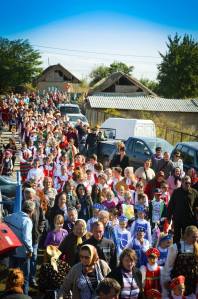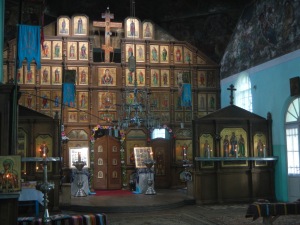by Michael Richardson
Only ten days into my Ph.D. research programme, exploring the engagement of the Deaf community and the use of British Sign Language (BSL) in theatre, I was fortunate to be able to attend a two day conference in Glasgow celebrating Deaf Arts and the progress made in that arena over the last decade.
The conference was hosted by Solar Bear, a Glasgow-based organisation which among other things runs Deaf Youth Theatre, a group working in BSL with young people from across the Central Belt; and Deaf Theatre Club, which encourages Deaf people to attend theatre performances across Scotland with BSL interpreters provided. Recently Solar Bear has also been a key contributor to the development of the new B.A. Performance in BSL and English which was launched at the Royal Conservatoire of Scotland earlier this month.
Also represented at the conference and giving presentations were Graeae Theatre Company and the Deaf and Hearing Theatre Ensemble from England; Tyst Theater, the National Deaf Theatre of Sweden; ANO Nedoslov, a Russian company using sign language as the basis of its performance practice; and composer Dr. Oliver Searle, who has recently written a piece of music specially for Deaf and hard of hearing children.
The two days of the conference were filled with practical presentations, giving delegates the opportunity to learn by engaging in different processes of theatre making, as well as the presentation of work, both theatre and film, with subsequent question and answer sessions designed to shed further light on different methods of creating accessible work.
The range of material explored at the conference was both exciting and stimulating. Jenny Sealey, whose company Graeae creates work by and for Deaf, visually impaired and disabled people, advocates a fully accessible approach to theatre making that uses spoken English and BSL as well as sound effects and music. Their practice aims to bring physical expression and audio description to bear as part of the communication from the stage: this is accessibility in action, in the context of making great theatre.
In contrast, the Deaf and Hearing Ensemble have developed an approach which could conversely be described as theatre making in action, in the context of providing effective accessibility. The ensemble is a group of theatre-makers with a range of skills who work in a fully collaborative way to produce theatre which is ripe with symbolism and emotional expression. They use every possible mode of communication available to them including spoken English, BSL, movement, mime, projections (of text and images) and music and soundscapes to ensure that the meaning they want to put across is conveyed accessibly to Deaf and hearing audiences alike.
Using BSL as a communication tool within the production was central to all the work I saw during the conference, but there was an interesting variety in the ways in which BSL was used as a language within the different performance styles. The two companies thus far described sat in the middle of the spectrum of techniques employed, as did the performance project created by Tyst Theater during the course of the second day. But two other presentations sat at opposite extremes of the sign language as performance spectrum.
At one extreme was Deaf Youth Theatre, who had made a film, A Love Divided, with Deaf actors. The result was accessible to Deaf and hearing audiences, as a result of using body language, music and effective moving image story telling techniques to communicate to the audience. However, almost no signed or spoken language was used, and the former was only intelligible through lip-reading: no dialogue was heard.
At the other extreme was the Russian company ANO Nedoslov, for whom the use of sign language was a full theatrical statement in itself. Using techniques similar to those explored by Pollitt in Signart: (British) sign language poetry as Gesamtkunstwerk (2014), the energetic physical actors and dancers of this company used the different linguistic components of signing to create a language of performance that was communicative, creative and beautiful. During their presentation one of the actors signified the sport of skiing using a mix of facial expression, body language, hand shapes, iconic signs and role shift to stunningly demonstrate to his audience a clear picture of the skis, the act of skiing, the snow, the landscape, the terrain, and finally the sheer emotional joy of completing the run successfully. It was a perfect introduction to their techniques that set up high expectations for their later performance which were not disappointed.
In summary, the two days were a fantastic introduction to my field of research. Having already some experience in creating theatre with Deaf people and using different techniques to include BSL in performance, it introduced me to approaches being used in other parts of the UK and further afield; and to the people involved in developing them. I returned to my desk today energised and eager to explore the topic further over the coming years.
Michael Richardson is a PhD student in the BSL section in LINCS




